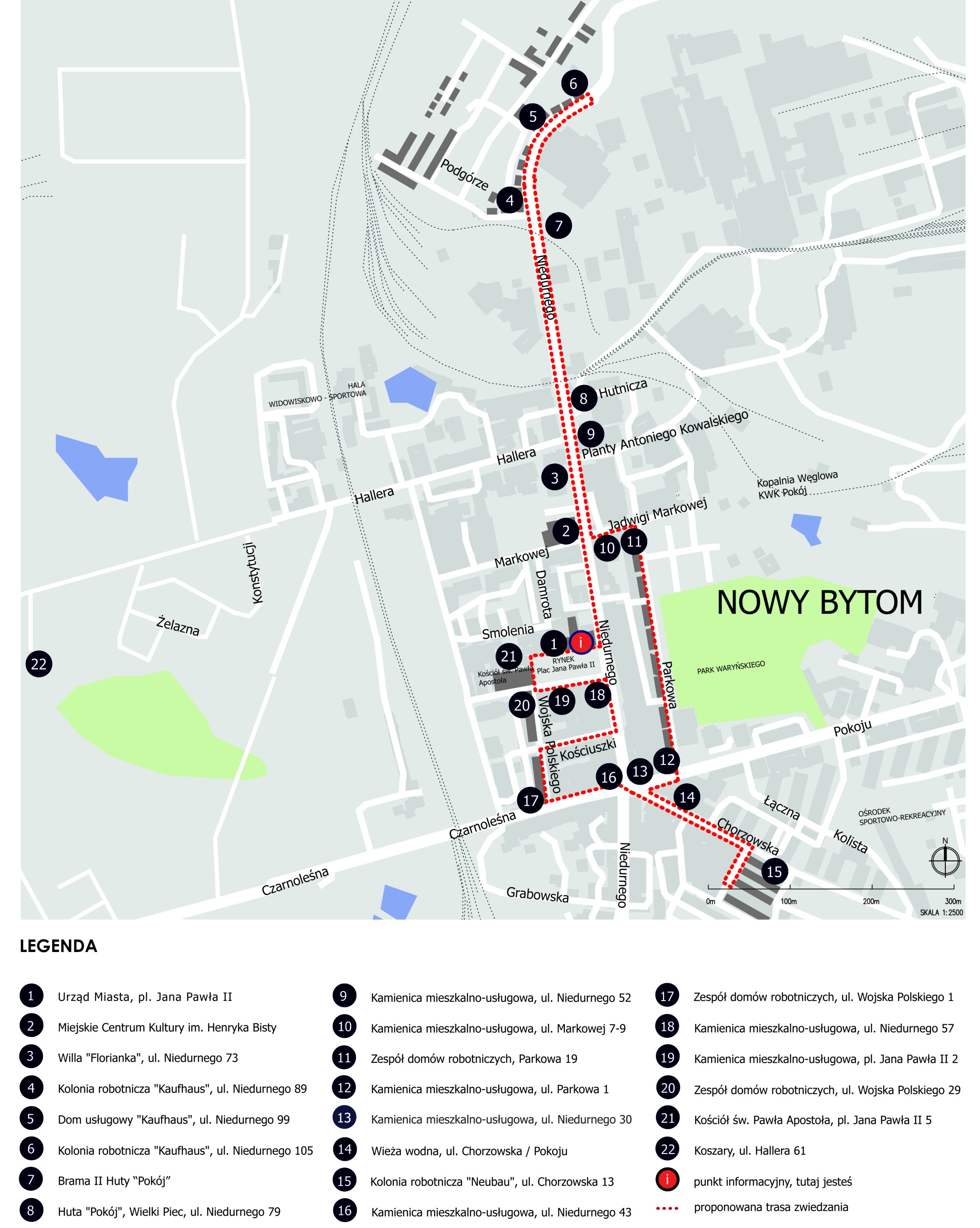|
|
|||||
|
Wirtualna Ruda
|
|||||
|
|
|||||
|
|||
|
Nowy Bytom grew in the 19th century in the area of Czarny Las, originally a forest enclave and property of the town of Bytom. The most important industrial plant of the district was the Friedenshütte (Pokój) steelworks, built in 1840 by merchants Szymon Löewy, Moryc Fridländer and Dawid Löwenfeld. In 1871, the steelworks was taken over by the Oberschelsische Eisenbahn Bedarfs Aktiengesellschaft company, organised by Karol Wolfgang Ballestrem. House building in Nowy Bytom began with the opening of the steelworks and was growing along with the development of the plant. The 1870s saw the construction of multi-storey buildings in which the apartments were mostly made up of two rooms. Villas were built for the administrative and technical personnel. The largest of the workers' colonies was situated parallel to the steelworks estate, with Kaufhaus, the early 20th century commodity house, as its central point. House building was at its peak after 1905. In 1913, already 57% of the steelworks workers lived in company housing. The silhouette of the Neo-Romanesque St Paul church, built in the years 1911-1912 in the centre of the district, towered over the surrounding area and became a symbol of Nowy Bytom. As a result of the 1921 Upper Silesia plebiscite, Nowy Bytom was incorporated into Poland. On 6 July 1922, the former parts of the Bytom town district were united by the Governor of Silesia to form an independent Nowy Bytom commune. Later, by virtue of the Council of Ministers’ ordinance of the 30 December 1950, the Nowy Bytom city county was established, and incorporated into it were the town of Wirek and the independent communes of Bielszowice, Bykowina, Halemba, Kochłowice and Kłodnica. The town of Chebzie, formerly part of the district of Godula, was also included. Four years later, Stara Kuźnica, formerly part of the district of Pszczyna, was also incorporated into Nowy Bytom.
|
|||
|
THE TOURIST ROUTE |
|||

|
|||
|
HISTORIC BUILDINGS IN THE DISTRICT* |
|||
|
|
|||
| *The table includes only selected historic objects from the area of district |
|
|
|
Projekty dofinansowane ze środków zewnętrznych |
|
|
|
|
|
|